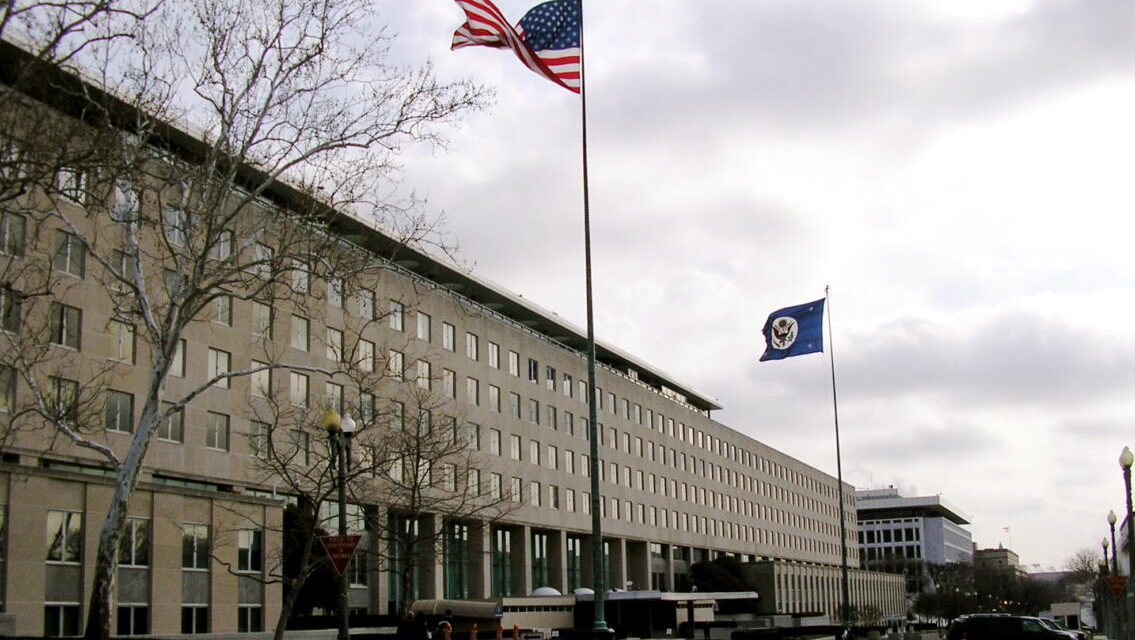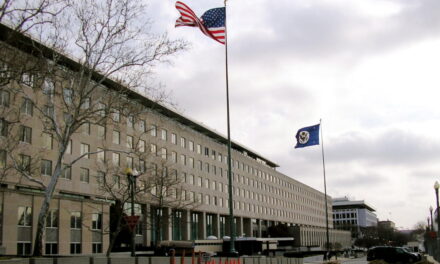Hopefully, by now you know what the following Tweet refers to:
Obviously I’m the first person on a campaign to ever take a meeting to hear info about an opponent… went nowhere but had to listen. https://t.co/ccUjL1KDEa
— Donald Trump Jr. (@DonaldJTrumpJr) July 10, 2017
That’s the president’s son and namesake making an “everybody does it” excuse for why he and Paul Manafort and Jared Kushner met with a lawyer for the Russian mafia in Trump Tower in June 2016 in order to, he says, get promised dirt on Hillary Clinton.
Most of the early headlines on this story emphasize that Natalia Veselnitskaya is a “Russian,” as if that alone would indicate collusion or some kind of treasonous disloyalty to country. Other headlines add in the detail that this Russian is a lawyer, as if that alone would be a problem.
Not to put too fine a point on it, but both Hillary Clinton and Trump’s Republican opponents hired an investigative firm to talk to Russians (both here in the United States and in the motherland) in an effort to find dirt on him. That’s how the now infamous Steele Dossier was produced. If all Donald Trump Jr. did was take a meeting with some Russian lawyer, that would only be newsworthy because the Trump campaign has been denying that any meetings with Russians took place.
These headlines are missing the actual scandal here. Natalia Veselnitskaya is a lot more than a “Russian lawyer.” To fully explain who she is would require me to write a novel length post, so I’m going to ask you to do a little of the work here by following some of the links. You can start by skimming through the the complaint that then-U.S. Attorney for the Southern District of New York Preet Bharara filed against Denis Katsyv and his corporations. What you’ll find is a painfully detailed description of the biggest tax heist in modern Russian history and the astonishing amount of work that went into laundering the proceeds from the robbery. You’ll discover that the conspiracy was hatched and carried out by members of the Klyuev Group. Members of the Klyuev Group are described as Russian mobsters linked to the Russian government. In this case they’re linked to the Russian government through connections in the Ministry of Internal Affairs, the Tax Ministry, and the courts. Without these connections, the tax heist would not have been possible.
The conspiracy was very, very complicated and I spent many hours over the weekend reading up on it. I won’t attempt to retell the whole story here. One thing you need to know, though, is that the folks who uncovered the conspiracy have not had an easy time of it. The first man to piece it all together died while in Russian custody at the hands of the Interior Ministry. Another was recently pushed out of a 4th story window.
The key figure in Bharara’s case, Denis Katsyv, was represented by Natalia Veselnitskaya. She was the guest who met with Trump’s inner circle. Another key figure, Andrey Pavlov, is described as “the consigliere for the Klyuev Group.”
Now, one of the most curious things about this case is that it involved a $230 million theft from the Russian treasury but Vladimir Putin hasn’t shown the least bit of concern about the lost money. Instead, he’s been happy to see the whistleblowers and investigators arrested, beaten to death and pushed out of windows.
At this point, we need to discuss an act of Congress called the Magnitsky Act:
The Magnitsky Act, formally known as the Russia and Moldova Jackson-Vanik Repeal and Sergei Magnitsky Rule of Law Accountability Act of 2012, is a bipartisan bill passed by the U.S. Congress and President Obama in November–December 2012, intending to punish Russian officials responsible for the death of Russian lawyer Sergei Magnitsky in a Moscow prison in 2009.
Sergei Magnitsky was a lawyer retained by Hermitage Capital Management to discover how and why several of their subsidiaries had been stolen by Russian mobsters, sued in courts for breaches of contract, and then had the huge resulting penalties used as tax write-offs. He was the first one to discover that the crime was carried out with the complicity of interior and tax ministry officials.
In 2009, Russian lawyer and auditor Sergei Magnitsky died in a Moscow prison after investigating fraud involving Russian tax officials. While in prison, Magnitsky developed gall stones, pancreatitis and calculous cholecystitis and was refused medical treatment for months. Finally, after almost a year of imprisonment and on the verge of death, Magnitsky was transferred to a Moscow hospital. There he was greeted not by a doctor but by a number of Russian OMON who bludgeoned him to death.
Vladimir Putin was extremely upset about the Magnitsky Act because it ultimately sanctioned 44 Russian citizens, and he utilized Natalia Veselnitskaya to lobby for its repeal. This is where we get the nexus between these Russian mobsters and Vladimir Putin.
Natalia Veselnitskaya is a “Russian lawyer whose clients include Russian “state-owned businesses”, including Petr Katsyv’s son, Denis Katsyv. The latter owns Prevezon Holdings, an investment firm, and his father is the “vice president of the state-owned Russian Railways and a former deputy governor of the Moscow region”.
Prevezon Holdings is the firm that Preet Bharara took to court for helping to launder the money from the tax heist by using the proceeds to purchase pricey New York City real estate. And, naturally, one doesn’t get to be the vice-president of Russian Railways without being very tight with Putin. Veselnitskaya represented the Katsyv’s interests, but she also represented Putin.
Veselnitskaya is known for leading a “multi-pronged” attack against “the Magnitsky Act, which provoked a Cold War-style, tit-for-tat row with the Kremlin when President Barack Obama signed it into law in 2012”. Veselnitskaya’s campaign included an unsuccessful attempt in Washington to repeal the Act and to “keep Mr. Magnitsky’s name off the Law. She was “also deeply involved in the making of The Magnitsky Act – Behind the Scenes—an anti-Magnitsky film that premiered in June 2016. She provided the film crew with “the real proofs and records of testimony” according to RussiaTV5, a “station whose owners are known to be close to Mr. Putin”. In response to the adoption of the Magnitsky Act, the Russian government denied Americans adoption of Russian children, issued a list of US officials prohibited from entering Russia, and posthumously convicted Magnitsky as guilty.
On that last point, the Russians convicted Magnitsky of tax fraud after they bludgeoned him to death while in their custody.
Preet Bharara was of course fired while conducting this case and it was recently settled for about 6 million dollars without Katsyv or his companies having to acknowledge any guilt.
Now, going back to June of last year, when the meeting between Trump’s inner circle and Ms. Veselnitskaya took place in Trump Tower, we are expected to believe that no one on Trump’s side knew who Veselnitskaya actually was or what kind of connections she might have that made it plausible that she had dirt on Hillary Clinton.
Donald Trump Jr. offered the initial explanation that his meeting with Veselnitskaya only pertained to suspension of Russian adoptions, but he quickly abandoned that defense and admitted outright that his own personal motivation for seeing her was that she was promising information that could help his father’s campaign.
Perhaps Trump Jr. wasn’t conversant on the Magnitsky controversy at the time, but Paul Manafort should have been. He had been working the Russian lobbying circuit for long enough to know where the money was flowing, and Russia was very vocal about the issue. She should have been seen as an agent of a foreign power and of Vladimir Putin in particular.
More than that, though, she should have been seen as an attorney for murderous Russian mobsters with high-level connections to the Russian Ministry of the Interior. Simple prudence should have prevented them from getting entangled with such a person, and not just for political reasons. The potential for blackmail or violence were too high to be acceptable to a rational person.
To put a kind of broader perspective on this, try to imagine a United States president who would be unconcerned about a $230 million tax fraud and who would shrug when members of the FBI beat a whistleblower to death in prison. Then imagine that this president would have the deceased posthumously (and wrongfully) convicted in court. Then this president would hire a lawyer for the criminals and make her his point person for lobbying against the resulting sanctions. And, finally, that he would send this mob lawyer to Trump Tower where she would be accepted with eager and open arms.
These are the real facts in this case. It’s not that they met with some ordinary Russian or some ordinary lawyer.
So, let’s please stay focused on why this matters.
And why was Preet Bharara fired again?





